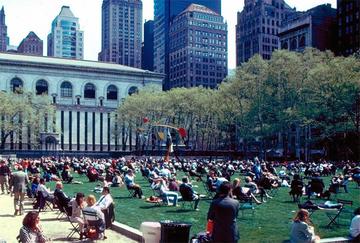By Micheline Maynard
All around the world, urban planners are coming up with new ways to encourage people to get more out of their cities. One of the biggest trends is “place making” (or placemaking, as people in the field call it).
That’s taking a public space, and adding new elements so that people want to come there. There are dozens of successful placemaking projects across the United States. Think of Bryant Park in New York City, Eastern Market in Detroit, and Guerrero Park in San Francisco.
All of these places have been around for years, but they’ve all seen a revival in the past decade or so, thanks to what takes place in them. Researchers at the Massachusetts Institute of Technology have written a major new white paper on placemaking, which you can read here.
One of the biggest benefits of placemaking may wind up being what it does to the way people get around. Fred Kent, founder of the Project for Public Spaces, says placemaking can boost public transportation, and encourage people to get out of their cars.
“If there’s one thing, you’re going to drive to it,” he told me for a story in Forbes. “If there are 10 of them, all of a sudden, you’re connecting them, and it’s a whole point of not needing your car.”That means potential benefits for bike sharing programs, since people also can hop on bikes as well as walk. Placemaking also can encourage people to use public transportation for more than just commuting into the city, and heading back home. If there are fun and interesting places to visit within a city, people will use transit to get to them, Kent says.
“It’s changing the whole process so you can connect people and do things,” Kent says.
One key, says Kent, is to look at transit agencies as community building organizations, not just movers of big numbers of people. He says that philosophy is taking hold in Paris, where the mission of public transit is shifting to creating spaces where people can gather.
That fulfills two missions, Kent says: improving quality of life, and taking the pressure off public transportation, by spreading out the times during the day when people want to get places.
The big shift to placemaking may not make traditional planners happy, but Kent says it has a bigger goal: making city dwellers and visitors happy. ”
It is turning everything upside down to get it right side up,” he says. “What’s happened over the past 70 years is an inadequate direction of development. You can improve communities and make them more sustainable.”

